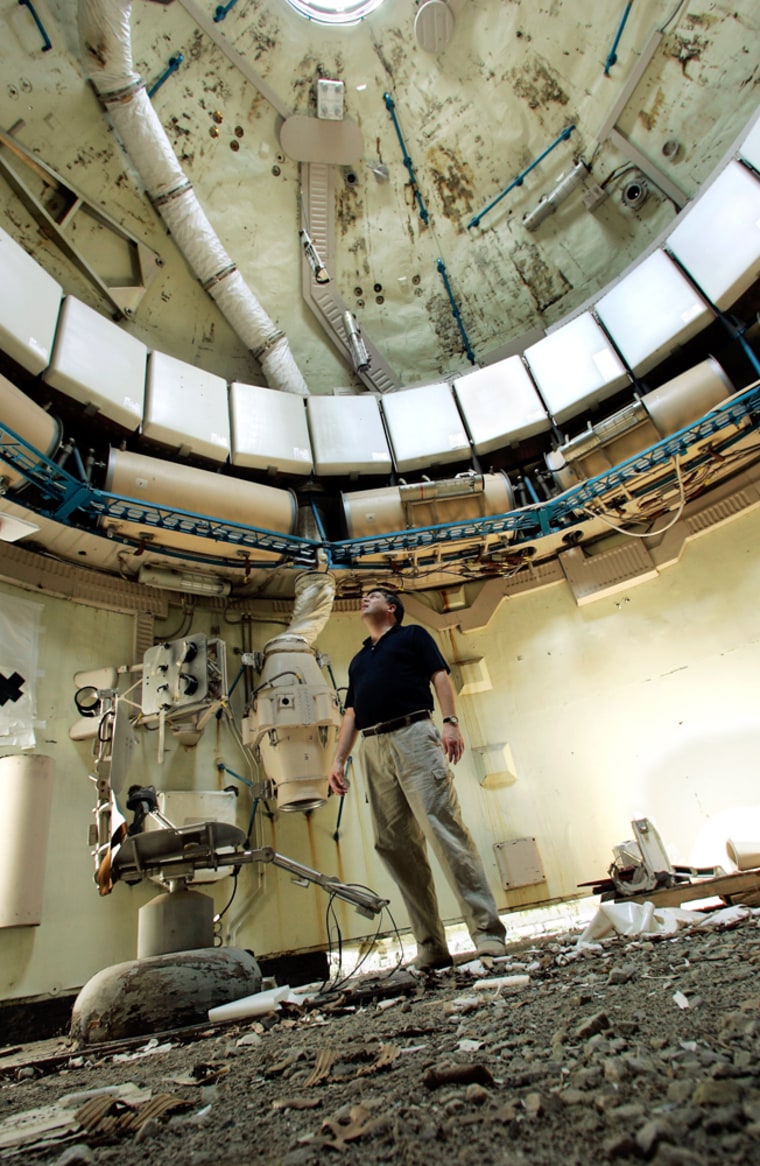Astronauts who flew in America's first space station more than 30 years ago trained in the aluminum-and-steel hulk that bakes under the blazing sun. Today, birds and raccoons have taken over.
A full-size training mock-up of Skylab is slowly rotting away outside the Alabama space museum where it spent years on display. Flecks of gray paint from a wall dot its mesh floor, and a bird's nest rests in an equipment compartment.
An engineering group has begun a restoration project, but more help is needed. The pay is awful: All the work is being done by volunteers using off-the-shelf materials like mildew remover from Target.
Tom Hancock isn't complaining. A board member of the American Institute of Aeronautics and Astronautics, he is a leader of work to restore the Skylab mock-up, which rests in a parking lot of the U.S. Space and Rocket Center near NASA's Marshall Space Flight Center.
A software expert with the rocket company Space Vector, Hancock is heading up the project for people like his 18-year-old daughter.
"It's history. It's a chance for people my daughter's age to kick back and see what it was like when I was young," he said.
Made from spare parts
Made primarily from spare parts left over from the Apollo program, Skylab orbited Earth for six years beginning in 1973. It helped pave the way for science projects aboard the space shuttle and the international space station currently in orbit.
Astronauts learning to live in space trained in Skylab mock-ups at Marshall and the Johnson Space Center in Houston. Owen K. Garriott, who flew the Skylab 3 mission in 1973, recalled working in the replica at Marshall.
"We called it a part-task trainer," said Garriott. "You might bring a few experiments at a time to work on them. It performed the task for which it was designed very nicely."
The Skylab mock-up was displayed for years inside the Space and Rocket Center. But exhibits change, and it was eventually moved outside to a back lot.
Chronically underfunded
The museum is owned by the state and survives mainly on admissions. Chronically underfunded, the center couldn't afford to do anything in the name of preservation other than take up the Army on its offer to cover the mock-up in white plastic.
"They wrapped with shrink wrap. It's so large it's hard to put a cover over," said museum curator Irene Willhite.
That was about six years ago; the plastic ripped to pieces long ago. Partiers found the Skylab and did their thing, leaving empty drink cans and taking pieces of equipment once worth thousands of dollars.
Members of the engineering group realized the poor condition of the mock-up in July and began work to restore the first of its five huge sections, the compartment where astronauts trained for experiments they later performed in space.
Hancock used a broom to chase off a couple of raccoons that were nesting in the floor, and volunteers cleaned up fabric ductwork and equipment that was coated in green algae and mildew.
New home being built
Once the restoration is done in a year, officials plan to move the Skylab replica into a building that's being built to house a full-size Saturn 5 moon rocket that was recently restored at the museum.
Willhite said the mock-up has an indelible place in America's space program.
"They could do everything in it but float," she said.
Three crews of three astronauts each spent a total of 171 days in Skylab, which re-entered the atmosphere in a fiery blaze in 1979.
The has more information about the effort.
